#Climate risk reporting
Explore tagged Tumblr posts
Text
Learn how to implement ESG reporting with key frameworks like GRI, SASB, and CSRD. Ensure compliance, track KPIs, and improve sustainability efforts.
#ESG Compliance#ESG Framework#Sustainability Compliance#ESG Audit#ESG Strategy#ESG verification#Corporate ESG#Climate risk reporting#ESG data management#How to Implement ESG Reporting Step-by-Step
0 notes
Text
Okay as a Swiftie I do find this funny, tho since someone literally said the words to me "isn't taylor swift the number one contributor to global emissions?" I feel the need to make it clear on such a post that no. No, she very much is not.

#emissions from flights globally including commercial airlines is like 2%#and she is included among that 2% with many others#like maybe it'd be better to criticize the overall accepted norm of private jets than to focus on one specific person#so all the other celebs and rich people can just do their thing and rest assured she'll take all the heat#also... do yall really want taylor swift on a commercial flight. she cant even walk into a restaurant without getting swarmed#she is working with what she's got considering the situation she's in#she cannot travel like a normal person because she cannot live like a normal person#because normal people dont run the risk of being mobbed if they get recognized#you can critique the whole idea of celebrity and how the music industry runs tours and such#but it's disingenuous to act like she's an outlier in this arena#the only outlier is how fixated people get on her#both loving and hating her#on both sides of the aisle people just get so fucking obsessed that their Taylor Vision blurs out everything that's actually important#which btw fun fact i learned today:#most climate reporting nowadays is sponsered by oil companies#so im just gonna go bury myself in the sand until the oily water erodes me into nothing but more grains of that sand#anyway even if taylor swift disappeared forever and never existed our planet would still be burning
24K notes
·
View notes
Text
SUSTAINABLE PRACTICES AND TOURISM DEVELOPMENT AT THE NATIONAL MUSEUM IBADAN AS A STUDY AREA
SUSTAINABLE PRACTICES AND TOURISM DEVELOPMENT AT THE NATIONAL MUSEUM IBADAN AS A STUDY AREA ABSTRACT This research explores the role of sustainable practices in tourism development, with a focus on the National Museum Ibadan, Nigeria. The study investigates the current sustainable practices at the museum, their impact on tourism development, the challenges faced in integrating sustainability, and…
#ai ml project topics#ai project topics for final year#any project topics#bank related project topics#banking related topics for project#bba 5th sem project topics#be project topics for computer engineering#best marketing project topics#best marketing topics for project#best research project topics#best topics for project report#bible project topics#biblical and theological project topics#brand awareness project topics#business ethics project topics#business research project topics#case study topics for project management#climate change project topics#computer science project topics in python#computer science project topics on web design#dbms mini project topics using sql#dbms project topics using sql#design thinking project topics#diversity project topics#easy marketing topics for project#examples of project proposal topics#finance internship project topics for mba#financial risk management project topics#good research project topics#good science project topics
0 notes
Text
No paywall version here.
"Two and a half years ago, when I was asked to help write the most authoritative report on climate change in the United States, I hesitated...
In the end, I said yes, but reluctantly. Frankly, I was sick of admonishing people about how bad things could get. Scientists have raised the alarm over and over again, and still the temperature rises. Extreme events like heat waves, floods and droughts are becoming more severe and frequent, exactly as we predicted they would. We were proved right. It didn’t seem to matter.
Our report, which was released on Tuesday, contains more dire warnings. There are plenty of new reasons for despair. Thanks to recent scientific advances, we can now link climate change to specific extreme weather disasters, and we have a better understanding of how the feedback loops in the climate system can make warming even worse. We can also now more confidently forecast catastrophic outcomes if global emissions continue on their current trajectory.
But to me, the most surprising new finding in the Fifth National Climate Assessment is this: There has been genuine progress, too.
I’m used to mind-boggling numbers, and there are many of them in this report. Human beings have put about 1.6 trillion tons of carbon in the atmosphere since the Industrial Revolution — more than the weight of every living thing on Earth combined. But as we wrote the report, I learned other, even more mind-boggling numbers. In the last decade, the cost of wind energy has declined by 70 percent and solar has declined 90 percent. Renewables now make up 80 percent of new electricity generation capacity. Our country’s greenhouse gas emissions are falling, even as our G.D.P. and population grow.
In the report, we were tasked with projecting future climate change. We showed what the United States would look like if the world warms by 2 degrees Celsius. It wasn’t a pretty picture: more heat waves, more uncomfortably hot nights, more downpours, more droughts. If greenhouse emissions continue to rise, we could reach that point in the next couple of decades. If they fall a little, maybe we can stave it off until the middle of the century. But our findings also offered a glimmer of hope: If emissions fall dramatically, as the report suggested they could, we may never reach 2 degrees Celsius at all.
For the first time in my career, I felt something strange: optimism.
And that simple realization was enough to convince me that releasing yet another climate report was worthwhile.
Something has changed in the United States, and not just the climate. State, local and tribal governments all around the country have begun to take action. Some politicians now actually campaign on climate change, instead of ignoring or lying about it. Congress passed federal climate legislation — something I’d long regarded as impossible — in 2022 as we turned in the first draft.
[Note: She's talking about the Inflation Reduction Act and the Infrastructure Act, which despite the names were the two biggest climate packages passed in US history. And their passage in mid 2022 was a big turning point: that's when, for the first time in decades, a lot of scientists started looking at the numbers - esp the ones that would come from the IRA's funding - and said "Wait, holy shit, we have an actual chance."]
And while the report stresses the urgency of limiting warming to prevent terrible risks, it has a new message, too: We can do this. We now know how to make the dramatic emissions cuts we’d need to limit warming, and it’s very possible to do this in a way that’s sustainable, healthy and fair.
The conversation has moved on, and the role of scientists has changed. We’re not just warning of danger anymore. We’re showing the way to safety.
I was wrong about those previous reports: They did matter, after all. While climate scientists were warning the world of disaster, a small army of scientists, engineers, policymakers and others were getting to work. These first responders have helped move us toward our climate goals. Our warnings did their job.
To limit global warming, we need many more people to get on board... We need to reach those who haven’t yet been moved by our warnings. I’m not talking about the fossil fuel industry here; nor do I particularly care about winning over the small but noisy group of committed climate deniers. But I believe we can reach the many people whose eyes glaze over when they hear yet another dire warning or see another report like the one we just published.
The reason is that now, we have a better story to tell. The evidence is clear: Responding to climate change will not only create a better world for our children and grandchildren, but it will also make the world better for us right now.
Eliminating the sources of greenhouse gas emissions will make our air and water cleaner, our economy stronger and our quality of life better. It could save hundreds of thousands or even millions of lives across the country through air quality benefits alone. Using land more wisely can both limit climate change and protect biodiversity. Climate change most strongly affects communities that get a raw deal in our society: people with low incomes, people of color, children and the elderly. And climate action can be an opportunity to redress legacies of racism, neglect and injustice.
I could still tell you scary stories about a future ravaged by climate change, and they’d be true, at least on the trajectory we’re currently on. But it’s also true that we have a once-in-human-history chance not only to prevent the worst effects but also to make the world better right now. It would be a shame to squander this opportunity. So I don’t just want to talk about the problems anymore. I want to talk about the solutions. Consider this your last warning from me."
-via New York Times. Opinion essay by leading climate scientist Kate Marvel. November 18, 2023.
#WE CAN DO THIS#I SO TRULY BELIEVE THAT WE CAN DO THIS#WE CAN SAVE OURSELVES AND THE WORLD ALONG WITH US#climate crisis#united states#climate change#conservation#hope posting#sustainability#climate news#climate action#climate emergency#fossil fuels#global warming#environmentalism#climate hope#solarpunk#climate optimism#climate policy#earth#science#climate science#meteorology#extreme weather#renewable energy#solar power#wind power#renewables#carbon emissions#climate justice
33K notes
·
View notes
Text
Melia Hotel sustainability
1. Risk and crisis management-Risk and crisis management can be defined as the process of identifying, assessing, and mitigating potential risks or crises that may impact a business or organization.

2. Environmental reporting-It includes reporting on things like energy consumption, waste management, greenhouse gas emissions, and other environmental impacts.

3.Climate strategy- It involves setting goals, implementing actions, and adapting to the changing climate to reduce greenhouse gas emissions and promote sustainability.

4.Social reporting- It includes aspects like community involvement, employee well-being, human rights, and ethical business practices.

5. Human rights- It's about creating a world where everyone's rights are respected and upheld for a better future.

1 note
·
View note
Text
Things Biden and the Democrats did, this week #24
June 21-28 2024
The US Surgeon General declared for the first time ever, firearm violence a public health crisis. The nation's top doctor recommended the banning of assault weapons and large-capacity magazines, the introduce universal background checks for purchasing guns, regulate the industry, pass laws that would restrict their use in public spaces and penalize people who fail to safely store their weapons. President Trump dismissed Surgeon General Dr. Vivek Murthy in 2017 in part for his criticism of guns before his time in government, he was renominated for his post by President Biden in 2021. While the Surgeon General's reconstructions aren't binding a similar report on the risks of smoking in 1964 was the start of a national shift toward regulation of tobacco.
Vice-President Harris announced the first grants to be awarded through a ground breaking program to remove barriers to building more housing. Under President Biden more housing units are under construction than at any time in the last 50 years. Vice President Harris was announcing 85 million dollars in grants giving to communities in 21 states through the Pathways to Removing Obstacles to Housing (PRO) program. The administration plans another 100 million in PRO grants at the end of the summer and has requested 100 million more for next year. The Treasury also announced it'll moved 100 million of left over Covid funds toward housing. All of this is part of plans to build 2 million affordable housing units and invest $258 billion in housing overall.
President Biden pardoned all former US service members convicted under the US Military's ban on gay sex. The pardon is believed to cover 2,000 veterans convicted of "consensual sodomy". Consensual sodomy was banned and a felony offense under the Uniform Code of Justice from 1951 till 2013. The Pardon will wipe clean those felony records and allow veterans to apply to change their discharge status.
The Department of Transportation announced $1.8 Billion in new infrastructure building across all 50 states, 4 territories and Washington DC. The program focuses on smaller, often community-oriented projects that span jurisdictions. This award saw a number of projects focused on climate and energy, like $25 million to help repair damage caused by permafrost melting amid higher temperatures in Alaska, or $23 million to help electrify the Downeast bus fleet in Maine.
The Department of Energy announced $2.7 billion to support domestic sources of nuclear fuel. The Biden administration hopes to build up America's domestic nuclear fuel to allow for greater stability and lower costs. Currently Russia is the world's top exporter of enriched uranium, supplying 24% of US nuclear fuel.
The Department of Interior awarded $127 million to 6 states to help clean up legacy pollution from orphaned oil and gas wells. The funding will help cap 600 wells in Alaska, Arizona, Indiana, New York and Ohio. So far thanks to administration efforts over 7,000 orphaned wells across the country have been capped, reduced approximately 11,530 metric tons of carbon dioxide equivalent emissions
HUD announced $469 million to help remove dangerous lead from older homes. This program will focus on helping homeowners particularly low income ones remove lead paint and replace lead pipes in homes built before 1978. This represents one of the largest investments by the federal government to help private homeowners deal with a health and safety hazard.
Bonus: President Biden's efforts to forgive more student debt through his administration's SAVE plan hit a snag this week when federal courts in Kansas and Missouri blocked elements the Administration also suffered a set back at the Supreme Court as its efforts to regular smog causing pollution was rejected by the conservative majority in a 5-4 ruling that saw Amy Coney Barrett join the 3 liberals against the conservatives. This week's legal setbacks underline the importance of courts and the ability to nominate judges and Justices over the next 4 years.
#Thanks Biden#Joe Biden#politics#us politics#american politics#election 2024#gun control#gun violence#LGBT rights#gay rights#Pride#housing#climate change
4K notes
·
View notes
Text
Hi! Just wanna raise some awareness here because South America is on fucking fire and I need to see more people talking about this.

Source: RSOE EDIS x
Im just going to talk about the ones i'm closest to, but if you know about these fires, feel free to add in the reblogs!
Chile
In Chile there's (up to Feb 5) 160 wild fires, of which 40 are still trying to be controlled by authorities. The president, Gabriel Boric, has declared State of Emergency in the whole country, and theres a Red Alert Code in most part of the country.
Isla de Chiloé, Southern Chile (900 km away from Santiago de Chile)
This is a (recently controlled) fire that lasted a week, but many neighborhoods were burnt to the ground.
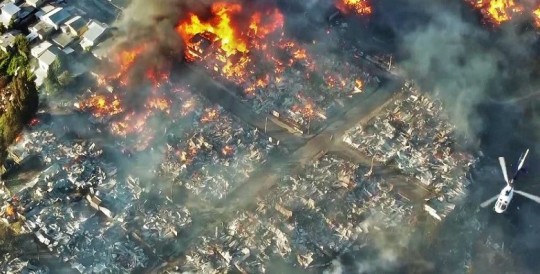
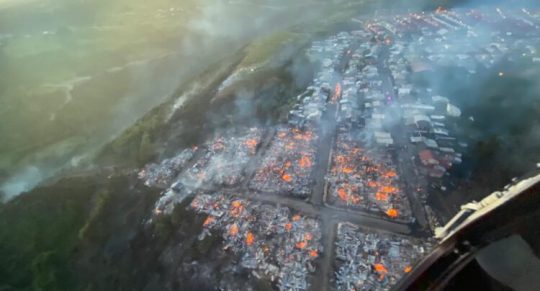
The whole South is in red alert for constant sudden fires that spread quickly due to the lack of rain and the elevated temperatues in the zone. Just today, two fires had to be controlled in the main land next to this island, and more are being reported in the Los Lagos region. This is added to the "controlled" intentional fires that farmers make to clean their fields of old crops along the Central-South parts of the country, mostly surrunding the main route, Ruta 5, that connects the whole country, thus making it hard to see and breathe because of the smoke. (flashnews, most of them get out of control quickly.)
Valparaiso/Viña del Mar, Central Chile (100 km away from Santiago de Chile)
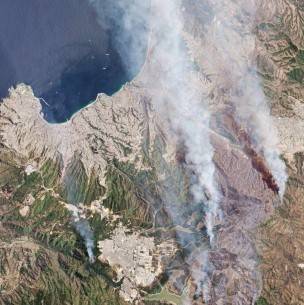
A fire that started on Friday 2nd and grew exponentially because of the wind and the dry, hot climate. More than 100 people are dead, with 70 unrecognized bodies and other 400 that have dissapeared. At least 30000 people that have lost everything to the fire.
There's massive evacuations from this and the neighboring city, Viña Del Mar.
This is said to be the second most deadly fire in the century, surpased by Australia in 2009.
45000+ hectares that include land and neighborhoods have been burnt down.
I could go on about this one, so more info here and here
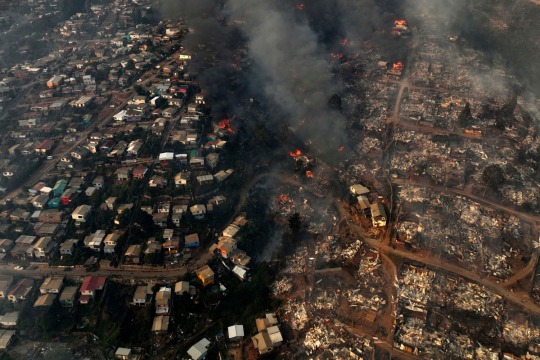
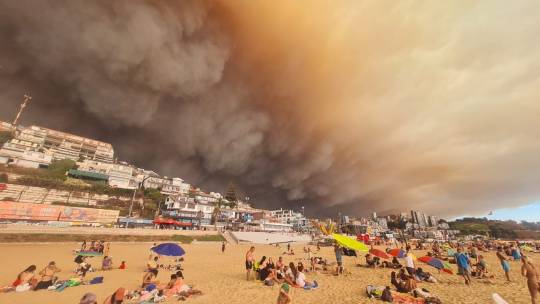
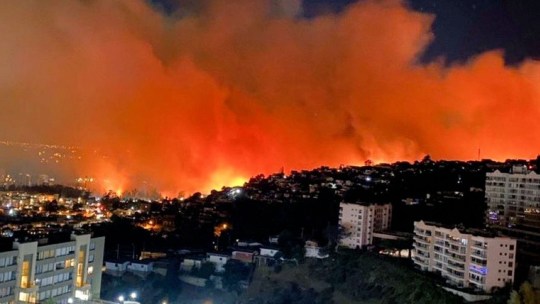
Argentina
Parque Los Alerces (Esquel), Chubut
The fire strarted on the 25th January, and the climate has made it hard to contain. 3000 hectares of native forest have been burnt to teh ground. It is now growing in the direction of the nearest city, Esquel. Theres been evacuations between yesterday and today (4 and 5th Febuary)
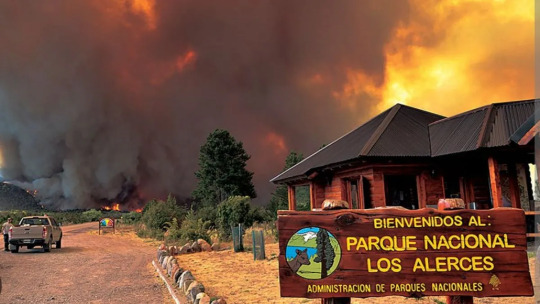
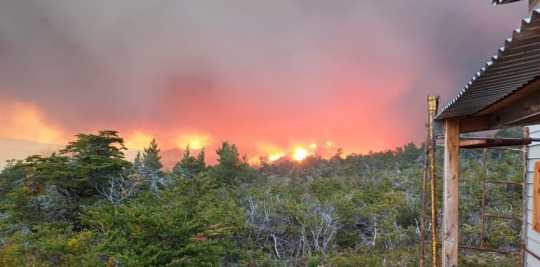
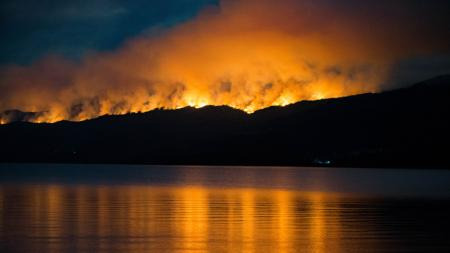
Parque Nahuel Huapi (Bariloche), Río Negro
The reason why im writing this. The city woke up today covered in smoke after a wildfire developed yesterday during the night. The reason? A fireplace that was not turned off in a place where people cannot disembark and can only be reached via boats.
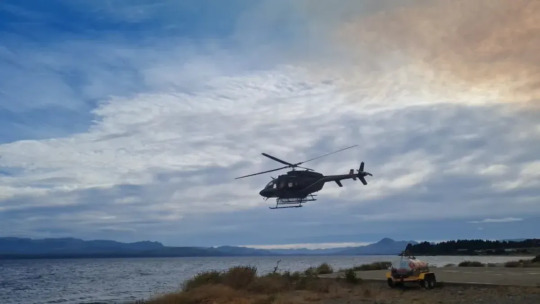

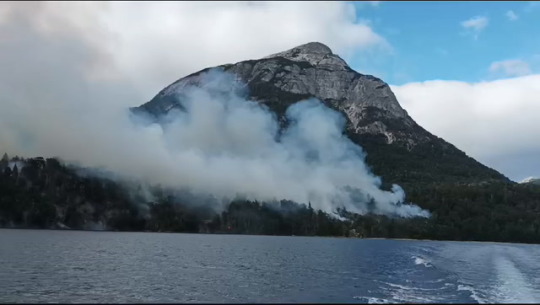
As of now, there's not much information about the fire but hopefully the firefighters will be able to contain it before it reaches Tronador Mountain, where an ancient glaciar is.
...which leads me to the other point i wanted to talk about.
Firefighters
They volunteer to do this job.
In Argentina and Chile, firefighting is not rewarded with a salary, and most of the times they dont even have full firehouses to stay in. These people are at their houses, ready to jump into action and run to the station the second the alarm goes off.
They are neighbors, people that risk their lives and run into danger willingly, just because they want to help the community.
I felt the need to give a shout-out to these people and say:
Don't be a fucking dick, don't start fires in the woods unless it's an approved place, and if you do, TURN IT OFF.
Pour abundant water on it, and do not stop when you don't see any more flames.
Keep pouring water until the ashes don't burn/feel like room temperature in your hand if you put it 10 cm away from it, and even then, pour some more just to be sure.
No heat and no smoke mean a safely extinguished fire.
Save lives and forests.
#dont even get me started on the denial of climate change from my president#didnt wanna get political here#argentina#chile#argieposting#argieblr#soff speaks#wildfires
6K notes
·
View notes
Text

Ellipsus Digest: March 18
Each week (or so), we'll highlight the relevant (and sometimes rage-inducing) news adjacent to writing and freedom of expression.
This week: AI continues its hostile takeover of creative labor, Spain takes a stand against digital sludge, and the usual suspects in the U.S. are hard at work memory-holing reality in ways both dystopian and deeply unserious.
ChatGPT firm reveals AI model that is “good at creative writing” (The Guardian)
... Those quotes are working hard.
OpenAI (ChatGPT) announced a new AI model trained to emulate creative writing—at least, according to founder Sam Altman: “This is the first time i have been really struck by something written by AI.” But with growing concerns over unethically scraped training data and the continued dilution of human voices, writers are asking… why?
Spoiler: the result is yet another model that mimics the aesthetics of creativity while replacing the act of creation with something that exists primarily to generate profit for OpenAI and its (many) partners—at the expense of authors whose work has been chewed up, swallowed, and regurgitated into Silicon Valley slop.
Spain to impose massive fines for not labeling AI-generated content (Reuters)
But while big tech continues to accelerate AI’s encroachment on creative industries, Spain (in stark contrast to the U.S.) has drawn a line: In an attempt to curb misinformation and protect human labor, all AI-generated content must be labeled, or companies will face massive fines. As the internet is flooded with AI-written text and AI-generated art, the bill could be the first of many attempts to curb the unchecked spread of slop.
Besos, España 💋
These words are disappearing in the new Trump administration (NYT)
Project 2025 is moving right along—alongside dismantling policies and purging government employees, the stage is set for a systemic erasure of language (and reality). Reports show that officials plan to wipe government websites of references to LGBTQ+, BIPOC, women, and other communities—words like minority, gender, Black, racism, victim, sexuality, climate crisis, discrimination, and women have been flagged, alongside resources for marginalized groups and DEI initiatives, for removal.
It’s a concentrated effort at creating an infrastructure where discrimination becomes easier… because the words to fight it no longer officially exist. (Federally funded educational institutions, research grants, and historical archives will continue to be affected—a broader, more insidious continuation of book bans, but at the level of national record-keeping, reflective of reality.) Doubleplusungood, indeed.
Pete Hegseth’s banned images of “Enola Gay” plane in DEI crackdown (The Daily Beast)
Fox News pundit-turned-Secretary of Defense-slash-perpetual-drunk-uncle Pete Hegseth has a new target: banning educational materials featuring the Enola Gay, the plane that dropped the atomic bomb on Hiroshima. His reasoning: that its inclusion in DEI programs constitutes "woke revisionism." If a nuke isn’t safe from censorship, what is?
The data hoarders resisting Trump’s purge (The New Yorker)
Things are a little shit, sure. But even in the ungoodest of times, there are people unwilling to go down without a fight.
Archivists, librarians, and internet people are bracing for the widespread censorship of government records and content. With the Trump admin aiming to erase documentation of progressive policies and minority protections, a decentralized network is working to preserve at-risk information in a galvanized push against erasure, refusing to let silence win.
Let us know if you find something other writers should know about, (or join our Discord and share it there!) Until next week, - The Ellipsus Team xo

619 notes
·
View notes
Text
If you can, reblog.
Australia’s newest climate report has shown how bad the climate crisis has gotten. The information is both horrifying and not new.
We knew this would happen. They knew this would happen. There is no longer an excuse.



Australia’s climate has warmed by an average of 1.51 +_ 0.23 Celsius, its oceans have warmed by 1.08 Celsius since 1990.
There is less rain, less water flow, sea levels are rising and the risk of catastrophic fires grows every day.
If you have the means to change: change.
If you don’t: inspire others to.
Link to report
#enviromental#enviro#environmental#environmentalism#enviroment#environment#climate#climate crisis#climate change#Aus#Australia#auspol#ausgov#us politics#politics#solar punk#climate action#climate catastrophe#climate news#tumblr#hellsite#hellsite (derogatory)#please
977 notes
·
View notes
Text
Analysis of Masks Worn During the Columbine Massacre
According to the official investigation, only one mask was recovered as evidence, with no details on its location at the crime scene. However, a photograph released in the El Paso report shows a green knit ski mask and thick, black knit gloves found next to Eric Harris' trench coat by a chain link fence.

[Source: El Paso Report]
It is important to note that the positioning of the mask and gloves in the photograph may not reflect their original location, as crime scene investigators might have removed them from a pocket for documentation purposes.
Eyewitness Accounts
Contrary to the assumption that Eric Harris wore the mask, numerous witnesses identified him by name and recognized his face while he was shooting from the top of the stairs. This raises questions about the mask's association with him. It is more plausible that Dylan Klebold wore the mask, as he was seen using one both outside and within the cafeteria. However, this raises the question of how the mask ended up near Eric's coat, especially since he did not return outside after being seen in the cafeteria.
Several witnesses reported seeing multiple shooters wearing masks in the cafeteria simultaneously.
Gloves and Their Function
The thick, knit gloves found alongside the mask are often cited as evidence that Eric wore them due to Colorado's cold climate. However, this perspective overlooks the practicalities of firearm use. The gloves are of a type commonly worn to avoid leaving fingerprints on weapons, yet they would hinder the operation of the pump-action shotgun Eric carried. Given that Eric was aware he would likely die during the shooting, he would have had no reason to be concerned about leaving fingerprints, nor would he risk fumbling with a shotgun while wearing such cumbersome gloves.
Witness Statements
Library Injured
Patrick Ireland [pp. 35-47]: "He stated that he was shot by a man who was wearing black clothes and a mask. The man was carrying a long gun. He could not describe the size of the man, nor did he recognize the man. He stated there was also a second man who was shooting. This man also wore a mask."
Library Witnesses
Rebecca Parker [pp. 509-518]: "One of the suspects then came to Parker’s table and looked under the table at Parker and that the person was wearing a dark ski mask, and this person put his gun to her head and just looked at her and did not say a word."
Outside Witnesses
Jake Apodaca [pp. 652-657]: "The other person was dressed all in black, black trousers, black shirt, black trench coat, a black beret, and was wearing what appeared to be a black mask."
Josh Chavez [pp. 734-737]: "He stated one was pretty tall, he stated it was Dylan...the suspect had a mask on his face."
Cafeteria Witnesses
Justin Alber [pp. 2289-2303]: "One of the gunmen who had long hair, wearing a black trench coat, black mask...was walking down the stairs."
Kyle Hayes [pp. 3272-3285]: "The suspect was wearing a dark colored ski style mask, with holes cut out for the eyes, nose, and mouth."
Classroom Area Witnesses
Jacob Schreck [pp. 5399-5402]: "He remembered seeing a guy outside throw something into the Senior parking lot. He described him as being tall, having some sort of mask, and wearing a black trench coat."
Statements Made to the Media
David Mesch [pp. 3743-3747]: "Said he saw two gunmen wearing black trench coats and black masks."
Bob Sapin: "Called on cell phone said that he was hiding in bushes and saw the two gunmen walking down the hall wearing trench coats and black masks carrying machine guns." Note: Nobody with the last name Sapin was interviewed. This person is likely fake.
#fawnsuga#tcc tumblr#tccblr#tcc fandom#columbine 1999#dylan columbine#tcctwt#teeceecee#true cringe community#tc community#columboner#eric columbine#tcc columbine#columbine school shooting#columbine massacre#columbine high massacre#4/20/99#eric 1999#eric and dylan#tcc eric#dylan 1999#tcc dylan#truecrimecommunity#true crume#tee cee cee
177 notes
·
View notes
Text
Reality-Based Communities

I'm on a 20+ city book tour for my new novel PICKS AND SHOVELS. Catch me in CHICAGO with PETER SAGAL next WEDNESDAY (Apr 2), and in BLOOMINGTON next FRIDAY (Apr 4). More tour dates here.

Remember the Global War on Terror? I know, it's been a minute. But there was a time when we were all meant to take terrorism – real terrorism, the knocking-down-buildings kind, not the being-mean-to-Teslas kind – seriously.
Back in the early oughts, I remember picking up a copy of the Financial Times in an airport lounge and flipping through it, and coming across an "advice to corporate management" column in which the question was, "Should I take out terrorism insurance for my business?" The columnist's answer: "The actual risk to your business of a terrorism-related disruption rounds to zero. However: a) your shareholders don't understand this, an b) your insurance company does. That means that you can buy a very large amount of terrorism insurance for a very small amount of money, making this a cheap price to pay to mollify your easily frightened investors."
I never forgot that little piece of writing. It was a powerful reminder that successful large-scale enterprises must attend to the world as it is, not as ideology dictates that it should be. This was – and is – a deeply heterodox position among the ideological defenders of capitalism, who continue to uphold Milton Friedman's maxim that:
Truly important and significant hypotheses will be found to have "assumptions" that are wildly inaccurate descriptive representations of reality, and, in general, the more significant the theory, the more unrealistic the assumptions (in this sense)
https://pluralistic.net/2025/02/17/caliper-ai/#racism-machine
These ideologues – who often cross over from boardrooms into governments – are with the GW Bush official who dismissed a journalist as a member of the "reality-based community":
When we act, we create our own reality. And while you're studying that reality—judiciously, as you will—we'll act again, creating other new realities, which you can study too, and that's how things will sort out. We're history's actors…and you, all of you, will be left to just study what we do.
https://en.wikipedia.org/wiki/Reality-based_community
But ultimately, someone has to make investments and plans that take accord of the world as it is, the adversaries they face, the real and material emergencies unfolding around them. When the Pentagon announces that henceforth the climate emergency will take a prime place in its threat assessments and budgets, that's not "the military going woke" – it's the military joining the reality-based community:
https://www.defensenews.com/opinion/commentary/2021/10/26/the-pentagon-has-to-include-climate-risk-in-all-of-its-plans-and-budgets/
This explains the radical shear between the Wall Street Journal's editorial page – in which you'll learn that governments can't solve any problems and markets solve all problems (including the problem of governments) – and the news reporting within, in which the critical role of the state in regulating and fueling markets is acknowledged.
The tension between the right's ideologues in boardrooms and governments and the operational people in charge of keeping the machines running has only escalated since the War on Terror days. There's an important sense in which leftists – as materialists – are playing the same game as these operational managers of capitalism. Take Thomas Piketty, the socialist economist whose blockbuster 2013 book Capital in the 21st Century argued that rising inequality threatened capitalism itself:
https://memex.craphound.com/2014/06/24/thomas-pikettys-capital-in-the-21st-century/
By analyzing three centuries' worth of capital flows, Piketty showed that when inequality reached a certain tipping point, the result was societal upheaval that continued until so much capital had been destroyed that inequality was reduced (because everyone had been pauperized). Piketty appealed to capitalism's technocrats to institute redistributive programs. His point was that building hospitals and schools was ultimately cheaper than paying for the guard-labor you'd need to keep people from building guillotines outside the gates of your walled estate.
The rise and rise of surveillance tech, and its successors, such as lethal drones and offshore gulags, can be seen as a tacit acknowledgment of Piketty's thesis. By lowering the cost of guard labor, it might possible to stabilize a society with higher levels of inequality, by identifying and neutralizing the people who are radicalized by the system's unfairness before you get an outbreak of guillotines:
https://pluralistic.net/2020/08/13/better-to-have-loved/#less-lethals
But reality is stubborn. Capitalism's defenders can insist that society will continue to function while wages stagnate and greedflation stokes the cost of living crisis, but ultimately, the military can't afford to have a fighting force that's in hock to payday lender usurers who are tormenting their families with arm-breaker collection calls:
https://www.nakedcapitalism.com/2025/03/payday-loan-apps-cost-new-yorkers-500-million-plus-new-study-estimates.html
As Stein's Law – a bedrock of finance – has it, "anything that can't go on forever eventually stops." The ideologues of capitalism can insist that Luigi Mangione is a monster and an aberration, an armed freeloader who wants something for nothing. But privately, their own security forces are telling them otherwise.
Writing for The American Prospect, Daniel Boguslaw reports on a leaked intelligence dossier from the Connecticut regional intelligence center – a "fusion center" created as part of the War on Terror – wherein we learn that the American people sees Mangione as a modern Robin Hood:
https://prospect.org/justice/2025-03-27-intelligence-dossier-compares-luigi-mangione-robin-hood/
Many view Thompson as a symbolic representation of both as reports of insurance companies denying life sustaining medication coverage circulate online. It is not an unfair comparison to equate the current reaction toward Mangione to the reactions to Robin Hood, citizens may see Mangione’s alleged actions as an attack against a system designed to work against them.
https://drive.google.com/file/d/1hM3IZbnzk_cMk7evX2Urnwh5zxhRHpD5/view
The Connecticut fusion center isn't the only part of capitalism's operational wing that's taking notice of this. Today, Ken Klippenstein reports on an FBI threat assessment about the "heightened threat to CEOs":
https://www.kenklippenstein.com/p/fbi-becomes-rent-a-cops-for-ceos
The report comes from the FBI's counter-terrorism wing, which (Klippenstein notes) is in the business of rooting out "pre-crime" – identifying people who haven't committed a crime and neutralizing them. As Klippenstein writes, Trump AG Pam Bondi and FBI Director Kash Patel have both vowed to treat anti-Tesla protests as acts of terror. That's the view from the top, but back on the front lines of the Connecticut fusion center, things are more reality-based:
[The public] may view the ensuing manhunt and subsequent arrest of Mangione as NYPD, and largely policing as a whole, as a tool that is willing to expend massive resources to protect the wealthy, while the average citizen is left to their own means for personal security.
Any good investor knows that anything that can't go on forever eventually stops. The only question is: will that halt is a controlled braking action, or a collision with reality's brick wall?

If you'd like an essay-formatted version of this post to read or share, here's a link to it on pluralistic.net, my surveillance-free, ad-free, tracker-free blog:
https://pluralistic.net/2025/03/27/use-your-mentality/#face-up-to-reality

Image: Lee Haywood (modified) https://www.flickr.com/photos/leehaywood/4659575229/
CC BY-SA 2.0 https://creativecommons.org/licenses/by-sa/2.0/
#pluralistic#luigi mangione#thomas piketty#piketty#inequality#unitedhealthcare#late-stage capitalism#reality-based community#guillotine watch#climate#climate emergency#payday loans#gwot#steins law
190 notes
·
View notes
Text
Bolinus brandaris [S. R]
Spencer Reid x fem!reader
word count: 1.6k
and by public demand, part. 2
summary: Reid loves the gift you just gave him and the whole team can notice.

"Everyone ready to go back?" Gideon asked, taking a quick look at the jet to make sure all of you were there. You had an extortion case quite far from home, Miami to be exact, and you had a long flight back to Quantico, so the last thing he wanted was to forget someone.
Miami was a beautiful place that you would have liked to visit in other circumstances, that had nothing to do with crimes at all, since you had always felt a certain weakness for the warm climate, the sticky breeze, and the sound of the waves that were on the beach.
You had only had the chance to go to a mall to buy a new outfit, because yours had been completely ruined, while Morgan took advantage of the wait to buy an ice cream popsicle. It hadn't been a dream ride, but it was something at least.
“I feel like I could sleep for 90 hours straight,” you sighed, closing your eyes and falling into Spencer's side as usual. You two were the youngest, he was younger than you of course, so it was easier to connect with him than the other members of the team. You seemed to have similar interests and he was strangely comfortable with you.
“You would actually need to wake up periodically to expel fluids or you would risk bursting your bladder or even your bowels, because even though your digestive system shuts down when you sleep it only does so for a certain number of hours. Maybe you could sleep for 14 or 17 hours, which is what a baby sleeps, but 90 seems excessive to me even if you do not consume drinks or food before doing so”
"It's an expression, Reid" you laughed, but without the intention of making him feel bad for having answered you that way. Sometimes it was necessary to explain to him that you weren't being serious, as obvious as this seemed.
"You can sleep through the whole trip" he argued and although you still had your eyes closed you assumed that he had shrugged "I'll wake you up if you start snoring"
"I don't snore!" you defended yourself, playfully smacking him on the arm and hearing him laugh. Somehow watching him led you to remember a chain of events ending in the package you had carefully stowed in your bag and you almost jumped out of your seat the next second: "Wait, I just remembered something" you reported and went to the baggage area to rummage through your suitcase, taking just a few minutes to be back in your seat “I bought you this”
"Me?" he asked in disbelief. The others were on their own business enough to notice your conversation, making the moment a bit more private.
“I looked at it and just thought of you. Although I don't know if you're going to like it” you said shyly, handing him something wrapped in a paper bag with a store sticker on it. You had found the gift when you went shopping for your clean outfit and a part of you had been anxious all day to be able to give it to him to watch his reaction.
Reid looked at it curiously and handled it carefully, as if he were afraid it would fall apart in his fingers, until he managed to open it and took a piece of cloth from it.
"A scarf?"
“I saw you in one the other day and I thought you might like them. You know, you always wear your vests under your coats and your ties and you're always overdressed, but in a cute way” you laughed, while you pointed your hands at your body pretending to touch the pieces of his outfit "But it's okay if you don't want to wear it"
"No! I mean yes. I want to use it” he reassured you. Spencer held it out to look at it more carefully: it was purple, a stripe in the middle of patterned colored rhombuses intertwined with some embroidery of branches with leaves in black. "Did you know that the color purple is related to royalty because of how difficult it was to obtain the pigment before the Christian era? It is obvious that artificial dyes didn’t exist at that time, so everything they dyed the fabrics with had to be obtained from nature and that particular tone was quite difficult to obtain because it came from Bolinus brandaris, an extremely rare species of sea snail. To obtain 1 gram of this substance it is necessary to have 10,000 snails. And that gram was barely enough to dye a small piece. Its value and the difficulty in mass-producing it is due to the fact that the substance obtained had to be left to dry in the sun for a very precise time to be used later. Half a kilo of wool dyed in that color cost what would now be equivalent to around 300,000 euros,” he said, still holding the scarf as he rambled on. "It is also related to liturgical attire, it symbolizes power, wisdom, and is the perfect combination between the energy of red and the calm of blue”
“Oh yeah, I… I knew all that before I bought it, I didn't choose it just because I think purple brings out your eyes” you blatantly lied, making your friend laugh tenderly.
“What I meant to say is that I like it” he added, a little embarrassed by the smile and attention with which you had been observing him. You always did that when he wandered off, leaving him helpless and not knowing how to react.
"You said it has to do with wisdom, right?" you exclaimed and he nodded gently "Do you think there's some weird psychological reason why my brain knew that and linked it to you or was it just a coincidence?"
"Well, it's hard to explain..." he began to say, turning a little in his seat to be closer to you and begin a long explanation about the connections that our brain creates with things and people.
You were completely exhausted but you didn't have the heart to stop him from saying anything he had to say and you listened intently as much as your body would allow, until eventually you were lulled to sleep by the sound of Spencer's soft voice. When he stopped hearing your hums he realized that you had already fallen asleep and he moved your body carefully until you were completely reclining on the chair, so that when you woke up the physical pain of sleeping on the plane would be less. He, for his part, stayed in the seat next to you sheltered your rest, and at some point ended up asleep too.

The day after she came back from Miami, Spencer was already wearing the scarf you gave him. He had matched it with a brown coat, a vest in a darker shade of purple than the scarf, and a white shirt that together made him look perfect. Also, his well-brushed straight hair fell to the side and his tanned skin looked particularly clean.
You didn’t need to tell him anything because the smile you gave him when you looked him up and down was reason enough for him to be flattered and also proud to receive your approval. All day you watched him, a bit for the garment and a bit for the very pleasure of admiring him, and you noticed that he frequently checked that everything about him looked good, as if he was trying to impress you. Every time he spoke he avoided looking at you, only at you, but you couldn't take your eyes off him.
The day after that he used it too and the next day and the next, to the point where it was strange to see him go anywhere without it, as if it had become a part of him. After a week, while they waited in the boardroom, Elle finally had the courage to face the situation and ask Spencer why the particular choice for something for everyday use.
"It's that his girlfriend gave it to him" answered Morgan, before the brunette could say anything.
"What? No! Y/N is not my girlfriend” he said, completely embarrassed and making sure with his eyes that you weren't around to hear that.
"Oh, now I understand" JJ joined the conversation.
"You understand what?"
“You are always taking care that it doesn’t get dirty or stained”
"Yes, I don't like my clothes to get ruined"
"But more so if it's something his girlfriend gave him" insisted Morgan and in a fit that no one expected Spencer took a ball of paper and threw it at his face. That just got a collective laugh.
"I just like it. That's all”
"We all know you like her, Reid," added Hotch, who had kept quiet thus far and didn't even look up from the files. He flushed red to the ears as the rest of the team shared another laugh, and just seconds later you and Gideon walked through the door.
"Good morning"
"Good morning" answered the others, like school children before the arrival of a teacher. There was one seat left next to Morgan that Gideon took and that forced you into the only remaining chair between Elle and Spencer.
“Did I miss something interesting?” you murmured, leaning into him and smiling close to his face.
"No" he replied kindly, feeling your gaze drop from his eyes.
"Your scarf," you said, reaching out your hands to move it a little around his neck "It was out of place"
Everyone else, except for Gideon, shared knowing glances and stifled giggles as they watched the nervous way he thanked you. It didn't help too much that for the entire meeting you were completely distracted looking at your partner next to you, making the whole team wonder when the two of you were finally going to end up kissing.
#spencer reid#spencer reid fanfic#spencer reid x reader#criminal minds#criminal minds fanfic#dr spencer reid#matthew gray gubler#aaron hotchner#derek morgan#jason gideon#JJ#penelope garcía
4K notes
·
View notes
Text
Scientists have developed a new solar-powered system to convert saltwater into fresh drinking water which they say could help reduce dangerous the risk of waterborne diseases like cholera.
Via tests in rural communities, they showed that the process is more than 20% cheaper than traditional methods and can be deployed in rural locations around the globe.
Building on existing processes that convert saline groundwater to freshwater, the researchers from King’s College London, in collaboration with MIT and the Helmholtz Institute for Renewable Energy Systems, created a new system that produced consistent levels of water using solar power, and reported it in a paper published recently in Nature Water.
It works through a process called electrodialysis which separates the salt using a set of specialized membranes that channel salt ions into a stream of brine, leaving the water fresh and drinkable. By flexibly adjusting the voltage and the rate at which salt water flowed through the system, the researchers developed a system that adjusts to variable sunshine while not compromising on the amount of fresh drinking water produced.
Using data first gathered in the village of Chelleru near Hyderabad in India, and then recreating these conditions of the village in New Mexico, the team successfully converted up to 10 cubic meters, or several bathtubs worth of fresh drinking water. This was enough for 3,000 people a day with the process continuing to run regardless of variable solar power caused by cloud coverage and rain.
[Note: Not sure what metric they're using to calculate daily water needs here. Presumably this is drinking water only.]
Dr. Wei He from the Department of Engineering at King’s College London believes the new technology could bring massive benefits to rural communities, not only increasing the supply of drinking water but also bringing health benefits.
“By offering a cheap, eco-friendly alternative that can be operated off the grid, our technology enables communities to tap into alternative water sources (such as deep aquifers or saline water) to address water scarcity and contamination in traditional water supplies,” said He.
“This technology can expand water sources available to communities beyond traditional ones and by providing water from uncontaminated saline sources, may help combat water scarcity or unexpected emergencies when conventional water supplies are disrupted, for example like the recent cholera outbreaks in Zambia.”
In the global rural population, 1.6 billion people face water scarcity, many of whom are reliant on stressed reserves of groundwater lying beneath the Earth’s surface.
However, worldwide 56% of groundwater is saline and unsuitable for consumption. This issue is particularly prevalent in India, where 60% of the land harbors undrinkable saline water. Consequently, there is a pressing need for efficient desalination methods to create fresh drinking water cheaply, and at scale.
Traditional desalination technology has relied either on costly batteries in off-grid systems or a grid system to supply the energy necessary to remove salt from the water. In developing countries’ rural areas, however, grid infrastructure can be unreliable and is largely reliant on fossil fuels...
“By removing the need for a grid system entirely and cutting reliance on battery tech by 92%, our system can provide reliable access to safe drinking water, entirely emission-free, onsite, and at a discount of roughly 22% to the people who need it compared to traditional methods,” He said.
The system also has the potential to be used outside of developing areas, particularly in agriculture where climate change is leading to unstable reserves of fresh water for irrigation.
The team plans to scale up the availability of the technology across India through collaboration with local partners. Beyond this, a team from MIT also plans to create a start-up to commercialize and fund the technology.
“While the US and UK have more stable, diversified grids than most countries, they still rely on fossil fuels. By removing fossil fuels from the equation for energy-hungry sectors like agriculture, we can help accelerate the transition to Net Zero,” He said.
-via Good News Network, April 2, 2024
#water#water scarcity#clean water#saline#desalination#off grid#battery technology#solar power#solar energy#fossil fuels#water shortage#india#hyderabad#new mexico#united states#uk#united kingdom#good news#hope#aquifers
1K notes
·
View notes
Text
Good News - May 15-21
Like these weekly compilations? Support me on Ko-fi! Also, if you tip me on Ko-fi, at the end of the month I'll send you a link to all of the articles I found but didn't use each week - almost double the content!
1. Translocation of 2,000 rhinos in Africa gets underway in “one of the most audacious conservation efforts of modern times”

“The 2,000 rhinos - more than are currently found in any single wild location in Africa - represent around 12-15% of the continent’s remaining white rhino population. […] “Rhinos perform an important ecological function in the environment as a large grazing herbivore,” says Dale Wepener[….] “The protection of rhino is far more than just looking after rhino; other species that occur in the protected areas will benefit from the protection,” explains Jooste. “This will lead to an increase in diversity and result in much healthier ecosystems.”
2. Florida Corridor Buffers Effects of Climate Change on Wildlife — And People

“A massive multi-partner effort that has conserved 10 million acres for wildlife in Florida over past decades will help buffer wildlife—and people—from the effects of climate change, a new report says. […] Protecting these corridors is important for wildlife genetics, demography and connectivity […], conducting prescribed fires in the corridor can reduce the risk of more intense wildfires [… and] they can provide buffers against hurricanes and seasonal thunderstorms.”
3. Global life expectancy to increase by nearly 5 years by 2050 despite geopolitical, metabolic, and environmental threats
“Increases are expected to be largest in countries where life expectancy is lower, contributing to a convergence of increased life expectancy across geographies. The trend is largely driven by public health measures that have prevented and improved survival rates from cardiovascular diseases, COVID-19, and a range of communicable, maternal, neonatal, and nutritional diseases (CMNNs).”
4. Valencia has Spain’s longest urban park
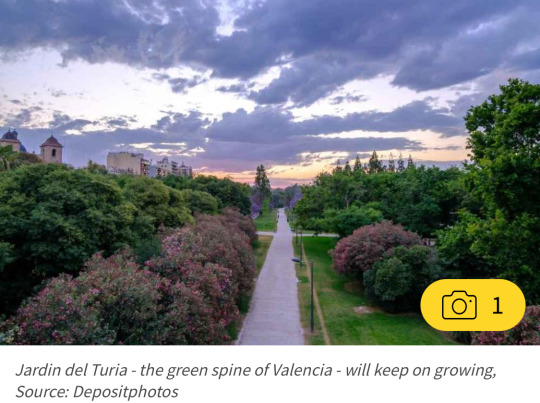
“Jardin del Turia (Turia Garden) is the green spine of the City of Valencia and Spain’s (and possibly Europe’s) longest urban park stretching for a length of 8.5 kilometres [… and] the current administration plans to make Jardin del Turia Europe’s largest city green space by extending it to the sea[….] Almost all Valencia residents (97 per cent) live within 300 metres of an urban green space. […] Jardin del Turia is a true urban oasis that provides exceptional thermal comfort, with a temperature difference of up to three degrees compared to other areas of the city.”
5. This Paint Could Clean Both Itself and the Air
“When an artificial ultraviolet light source shines on [photocatalytic] paint, the nanoparticles react with pollutants to make them break down—theoretically removing them from the nearby air and preventing a discoloring buildup. [… R]esearchers developed a new photocatalytic paint that they claim works using UV rays from ordinary sunlight, making its self-cleaning properties easier to activate. They’ve also shown that they can effectively produce this paint from recycled materials [including fallen leaves].”
6. Planting Seedlings for a Cooler Rockingham
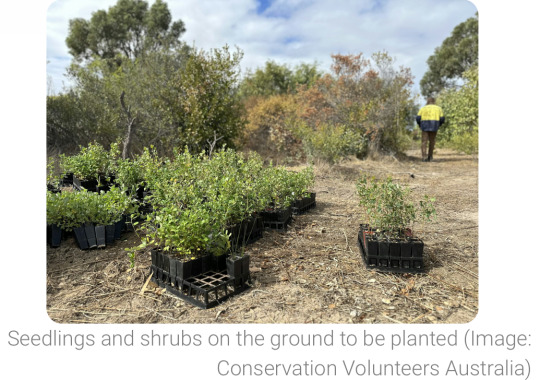
“A dedicated group of volunteers recently planted over a thousand native seedlings in Lewington Reserve [… and] re-established canopy cover to areas of the reserve to create cooling shade for the local community and provide homes for native wildlife. […] Planting lots of trees and shrubs in urban areas can help create shade and cool cities, mitigating the impacts of climate change, contributing to biodiversity conservation and building greener, more resilient communities.”
7. Sydney’s first dedicated affordable housing for trans women designed to deliver ‘positive outcomes’

“Community housing provider and charity Common Equity NSW, […] which is for people on very low to moderate incomes, prides itself on creating inclusive living and promotes the independence and well-being of people and communities […, and] will deliver the first-of-its-kind social housing in a bid to provide a safe place to live for transgender women seeking an affordable home.”
8. Rewilding: How a herd of bison reintroduced to Romania is helping ‘supercharge’ carbon removal

“170 European Bison reintroduced to Romania’s Țarcu mountains could help capture and store the carbon released by up to 84,000 average US petrol cars each year. […] By grazing a 48 square kilometre area of grassland in a wider landscape of 300 kilometres squared, they helped to capture an additional 54,000 tonnes of carbon each year. That is around 10 times the amount that would be captured by the ecosystem without the bison.”
9. World’s biggest grids could be powered by renewables, with little or no storage

“[…] 100% renewable supply can then match the load by putting surplus electricity into two kinds of distributed storage worth that [an energy expert] says are worth buying anyway – ice-storage air-conditioning and smart bidirectional charging of electric cars, and recover that energy when needed, filling the last gaps with unobtrusively flexible demand.”
10. Supporting the Long-Term Survival of Copper River Salmon and Alaska Native Traditions
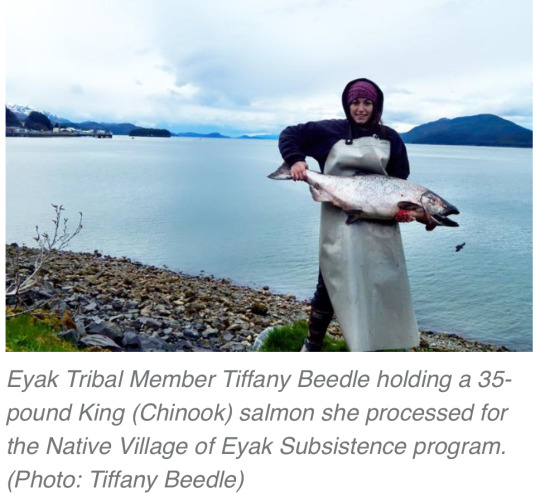
“With $4.3 million in NOAA funds, the Copper River Watershed Project and The Eyak Corporation will remove fish passage barriers, opening more streams for salmon spawning and subsistence fishing. [… As part of this effort, o]ld narrow culverts that constrict water flow will be replaced with “stream simulation” culverts wide enough to fit the full stream, including its banks. They are also deep to allow contractors to place stones and other material inside to mimic a natural stream bottom.”
May 8-14 news here | (all credit for images and written material can be found at the source linked; I don’t claim credit for anything but curating.)
#hopepunk#good news#rhino#white rhino#africa#conservation#rewilding#climate change#florida#wildlife#life expectancy#health#spain#green space#urban parks#recycling#trees#global warming#trans#affordable housing#australia#bison#romania#carbon#carbon capture#renewableenergy#reforestation#salmon#alaska native#nature
390 notes
·
View notes
Text
Montreal vs snow: a feat of choreographed chaos
Montreal’s cold season is defined by a messy and unrelenting fight against the snow. Efforts to clear it cost nearly $200mn a year, more than any other city in the world. The biggest snow dumping ground is the Francon Quarry, a disused open-pit mine that spans an area equivalent to over 90 city blocks. Strewn with plastic bottles and rubbish picked up during snow removal, the quarry has become an urban glacier. As the piles of snow there grow larger, avalanches are starting to become a serious safety concern. Climate change has made Montreal’s efforts at snow clearance, or déneigement, more challenging than ever. The characteristics of annual snowfall are shifting. Total volume is down, but it has been concentrated into a shorter period of time. The freeze and thaw cycle is shorter too. This means the Francon dumping site has to be expanded so that snow collected in previous years has time to disappear. Until last summer, district snow depot foreman Giovanni Scattone was still trying to melt snow collected nearly 15 years ago during a particularly bad winter. “In 2008, we lost the sidewalks,” he tells me, watching anxiously as I nearly slip on a patch of ice while peering over the quarry’s edge. A good snowfall in Montreal means clearing 10,000km of roads and pavements — roughly the distance from here to Beijing. Snowploughs move in a grand, motorised choreography. “It’s fluid, nonstop, one truck after the other,” says Scattone.
The private snow removal business has a history of corruption and links to organised crime. A 2015 report by Montreal’s inspector general found evidence of bid-rigging (an official at one company was told he’d have his legs broken if he bid on a lucrative contract). According to reports by local news, there have also been attempts to defraud the city by artificially inflating truckloads of snow and on one occasion a high-profile firebombing of one suburban snow removal firm. No aspect of snow clearance is easy. For those who live here it can sometimes feel as if civilisation is getting in the way of what nature has decided should be a perfect blanket of white. Even de-icing comes with its own set of risks. The salt needed to treat the roads is poisonous to the city’s infrastructure, eating away at concrete, corroding steel and wearing down sewage pipes. If left uncleared, stones and grit mixed with salt turns into a fine dust that can cause air pollution during the summer. Alternatives are thin on the ground, though Montreal has experimented with substitutions, including coffee grinds: “It wasn’t very efficient,” says Sabourin, “it was pleasant though. The odour was marvellous.”
93 notes
·
View notes
Note
can i request pure vanilla suffering from a cold because he visited the dark cacao kingdom without proper arraengements for the climate thinking that after all this years his body would have developed against the frozen land, turns out the one holding the light of truth was incredibly wrong, and know he gotta deal with the antiquated dark cacao kingdom medicine
GOOD OLD-FASHIONED CHICKEN SOUP
─── ∘°❉°∘ ───
Pure Vanilla Cookie had ended up with red eyes, a sore throat and a runny nose after wearing too little layers on his trip to the Dark Cacao Kingdom.. it didn’t take a healer to figure out what was wrong with him.
Luckily, Dark Cacao Cookie has just the remedy!
A/N: I read five different websites for information on this and it's STILL only 550 words I'm going to cry I'm so sorry
─── ∘°❉°∘ ───
Pure Vanilla Cookie woke up a small hour after Dark Cacao Cookie did. He made his way downstairs towards the throne room, sniffling quietly. It seemed Dark Cacao had been right, and Pure Vanilla hadn’t prepared well enough for the cold.. oh, he already knew his husband was going to be insufferable about it.
His expectations were, as always, completely correct.
“Why is your nose running?” Was the first thing Dark Cacao said. Then, “Are you sick? Why are you sniffing?”
“Good morning to you too, my dear,” Pure Vanilla murmured sarcastically, approaching the other and nuzzling his face into Dark Cacao’s warm chest. “I slept fine, thank you, how was your night?”
“Don’t contaminate me,” Dark Cacao grumbled, inarguably not pulling away.
“Wouldn’t want to risk having to stay in bed all day, hm?” Pure Vanilla said without even bothering to hide his smile.
“That’s different. I have things to do. You, on the other hand, should be resting.” Dark Cacao turned from his healer, focusing back on the reports that had been resting on the left armrest of the throne.
“I cannot fall asleep in this condition,” Pure Vanilla sighed.
“This may come as a surprise to you, but I am not God. I cannot cure your cold with a snap of my fingers,” Dark Cacao said dryly.
“You don’t have anything against colds here?” Pure Vanilla asked, raising an eyeb
“Yes, but the leeches are scarce and I’d prefer to save them for a more dire situation.
Pure Vanilla’s eyebrow inhaled sharply through his nose (a mistake, because he had to sneeze immediately after). “The what now?”
“The leeches?” Dark Cacao said, his tone of voice taking that of a mother talking to her three-year-old. “The leeches that suck the illness out of your blood? By the Witches, don’t tell me you still use stale ale for colds in the Vanilla Kingdom..”
“No,” Pure Vanilla said, a little baffled. “No, we use paracetamol.”
It was Dark Cacao’s turn to look confused. “Do you seriously trust the tree root medicine?”
“Do you seriously trust leeches? Cacao, what in the world are you giving to your people when they’ve fallen ill?” Pure Vanilla’s eyes had opened just so his husband could see how much this bothered him.
“The usual,” Dark Cacao said vaguely.
“That says absolutely nothing,” Pure Vanilla replied. “I think I’m going to make a little visit to your medical facilities when my cold has passed.”
“I don’t know if that’s such a good-”
“Cacao, I’d rather bring a few dozens of paracetamol from my Kingdom to yours if it means not putting any leeches on your soldiers.”
“..hmgh,” Dark Cacao muttered, turning away from Pure Vanilla with a mildly displeased expression on his face. “Is chicken soup too good for the king of healers, or can he bring himself to force a spoonful down his throat?”
Pure Vanilla chuckled, the outer corners of his closed eyes crinkling. “Oh, it’ll have to do.”
#dark cacao cookie#pure vanilla cookie#dark cacao#pure vanilla#dark cacao crk#pure vanilla crk#purecacao#darkvanilla#dark cacao x pure vanilla#pure vanilla x dark cacao#dark cacao cookie x pure vanilla cookie#pure vanilla cookie x dark cacao cookie#fanfiction#dark cacao kingdom#cookie run kingdom#cookie run#sickfic#mimi writes ୨୧
82 notes
·
View notes